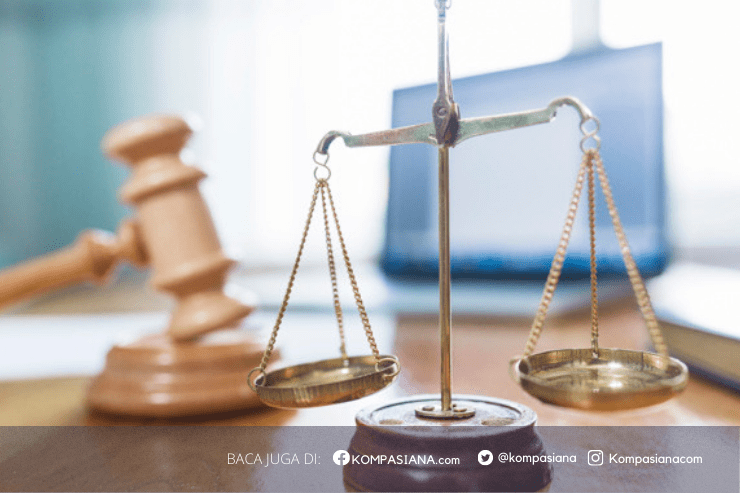Indonesia, as an archipelagic country, has small islands that hold extraordinary natural wealth, such as coral reefs, seagrass beds, mangroves, fishery potential, and world-class tourism. Tourists' interest in small islands as tourist destinations is not only influenced by the physical appeal of the island (coastal areas, waves, sand, climate conditions and unique biodiversity) but also by the atmosphere of the island's authenticity, its ecosystem which has biological resources and the people who live on the island having a unique culture.[1] One area that represents this advantage is Raja Ampat, which is recognized by UNESCO as a global geopark consisting of four main islands that attract visitors with their distinctive limestone islands and small islands next to the main islands.[2] Unfortunately, the expansion of the mining industry on small islands can exacerbate the vulnerability of coastal areas to climate crises and natural disasters. Until December 2023, there were 218 mining business permits spread across 34 small islands in Indonesia.[3] Raja Ampat is no exception, which is threatened with losing its appeal due to nickel mining.[4]
Greenpeace, in its report entitled "Lost Paradise?", revealed that there are five active nickel mining permits in the Raja Ampat area.[5] Several islands in the Raja Ampat area are the locations for exploration and utilization of mineral resources by a number of companies. Gag Island has a concession area of 13,136 hectares that is currently managed by Gag Nikel company.Meanwhile, Kawei Island in the West Waigeo District is listed in the mineral utilization plan by Kawei Sejahtera company mining with an area of 5,922 hectares which will last until 2033. In the Waigeo Islands and Manuram Island, Anugerah Surya Pratama company manages a concession with a total area of 10,532 hectares. Meanwhile, Manyaifun Island and Batang Pele Island are included in the exploration area by Mulia Raymond Perkasa company which has started survey and sampling activities since 2024 with an area of 2,194 hectares.[6]
On June 10, 2025, the government finally revoked four mining permits due to environmental violations, namely those belonging to ASP company, MRP company, KSM company, and Nurham company, through Press Release Number: 054.Pers/KM.01.03/SJI/2025. Only the Gag Nikel company's permit was not revoked, but all mining activities of the Gag Nikel company will be strictly monitored, starting from Amdal, reclamation and ensuring that environmental sustainability is maintained.[7] The Minister of Energy and Mineral Resources,Bahlil Lahadalia, stated that Gag Nikel company is a subsidiary of Aneka Tambang (Antam) company which holds the Seventh-generation work contract with the number B53/Pres/I/1998. In addition the company has obtained all the required permits, including mining business permit, environmental approval, and forest area utilization permit. However, although administratively legal, mining activities are still not in line with the spirit of protecting small island ecosystems, especially if they enter protected forest areas that are very vulnerable to damage.
Law Number 1 of 2014 concerning Management of Coastal Areas and Small Islands clearly prohibits mining activities on small islands because they are considered vulnerable and have ecosystems that must be protected. The Constitutional Court Decision Number 35/PUU-XXI/2023 supports the ban on mining in coastal areas and small islands because it can lead to permanent harm, which goes against the goals of protecting the environment and ensuring fairness for future generations. [8] According to Ahmad Aris, small islands whose landscapes are mostly filled with sea with mining activities such as nickel are at risk of permanently damaging the marine landscape.[9]
According to Ferry Irwandi, mathematically and based on optimistic calculations, the economic value of nickel mining in the region does not exceed the potential long-term income from marine conservation. The latest calculations state that the total value of the mine only reaches around IDR 347.5 trillion over a period of 50 years. And that is still in the form of gross revenue, not deducting operational costs, state-owned enterprisedividends, environmental recovery costs, and management by entities such as Danantara. If dissected more deeply, this economic value is not even comparable to the potential for ecotourism, sustainable fisheries, blue carbon, and the ecological value of Raja Ampat as a world marine laboratory. Furthermore, the multiplier effect of mining is almost zero, because most of the profits do not circulate in local communities.[10]
Raja Ampat is the world's center of marine biodiversity, home to 1,500+ species of reef fish, 75% of the world's coral reefs, and dozens of marine mammal and shark species. The concept of a safe distance of 30--40 km, which is cited as justification, is a form of misleading scientific logic because pollution in the sea does not recognize administrative boundaries. Open-pit mining activities at sea carry major risks such as sedimentation, chemical leaks, transportation pollution, and permanent ecosystem damage that is difficult to restore. Even if the mine only operates for 20 years, the remaining 30 years will be filled with the burden of large restoration and environmental recovery costs. [11]
Concrete steps to save Raja Ampat from the threat of environmental damage can be done by conducting an independent and transparent environmental audit to accurately identify the impacts caused by mining activities.[12] Conducting open dialogue with local communities and traditional leaders is important to gather aspirations and ensure their active participation in the decision-making process and management of the area.[13] In the long term, the development of sustainable tourism needs to be prioritized as an environmentally friendly economic alternative, which not only preserves nature but also provides direct benefits to local communities.[14] On the other hand, law enforcement must be carried out fairly and firmly against parties who are proven to have violated laws and regulations related to the environment and management of coastal areas and small islands in order to ensure ecosystem protection and intergenerational justice.[15]
Reference:
Arif, Ahmad. "Raja Ampat Dan Petaka Lingkungan Di Pulau-Pulau Kecil Yang Ditambang." Kompas, 2025. https://www.kompas.id/artikel/raja-ampat-dan-petaka-lingkungan-di-pulau-pulau-kecil-yang-ditambang.
Greenpeace Indonesia. "Melindungi Surga Terakhir: Investigasi Greenpeace Ungkap Rencana Besar Industri Nikel Di Raja Ampat." Greenpeace Indonesia, 2025. https://www.greenpeace.org/indonesia/siaran-pers-2/63138/melindungi-surga-terakhir-investigasi-greenpeace-ungkap-rencana-besar-industri-nikel-di-raja-ampat/.
---------. "Save Raja Ampat." Greenpeace Indonesia, 2025. https://www.greenpeace.org/indonesia/aksi/save-raja-ampat/.







